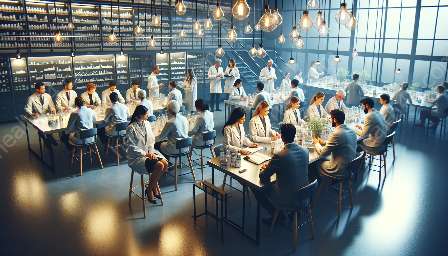Food photography and styling for cookbooks are essential components in creating visually appealing and enticing recipe books. In this comprehensive guide, we will explore the intricate and artistic process of capturing food through photography, styling it to perfection, and presenting it in a way that aligns with cookbook writing, as well as food critique and writing.
Capturing the Essence of Food
Food photography is an art in itself. It involves not only the technical aspects of capturing images but also an understanding of food, culture, and storytelling. A successful food photograph should evoke emotions and appetites, telling a story about the dish and the ingredients used. It requires a keen eye for composition, lighting, and creativity.
Styling for Visual Appeal
Styling plays a crucial role in food photography. The way food is styled can significantly impact how it is perceived by the audience. From choosing the right props, backgrounds, and plating techniques to creating a visually cohesive layout, every element contributes to the overall appeal of the image. Styling should not only make the food look appetizing but also complement the theme and narrative of the cookbook.
Techniques and Tools
There are various techniques and tools employed in food photography and styling. Lighting is arguably the most critical aspect, as it can make or break a food photograph. Natural light is often preferred for its soft, flattering effect on food, but artificial lighting can also be used to achieve the desired mood and ambiance. Props such as utensils, tableware, and decorative elements are carefully chosen to enhance the visual story without overpowering the main subject – the food.
Aligning with Cookbook Writing
Food photography and styling should seamlessly align with the narrative and content of the cookbook. The images should complement the recipes, evoke the desired emotions, and entice the readers to try the dishes. The visual presentation should be cohesive with the written content, serving as a visual interpretation of the recipes and enhancing the overall culinary experience.
Integration with Food Critique and Writing
Food critique and writing are closely intertwined with food photography and styling. A well-crafted food image can evoke sensory experiences and create anticipation, influencing how the food is perceived and critiqued. Additionally, food writers and critics often rely on visually appealing content to convey their experiences and opinions, making food photography and styling an integral part of their work.
Capturing the Essence of Food
Food photography is an art in itself. It involves not only the technical aspects of capturing images but also an understanding of food, culture, and storytelling. A successful food photograph should evoke emotions and appetites, telling a story about the dish and the ingredients used. It requires a keen eye for composition, lighting, and creativity.
Styling for Visual Appeal
Styling plays a crucial role in food photography. The way food is styled can significantly impact how it is perceived by the audience. From choosing the right props, backgrounds, and plating techniques to creating a visually cohesive layout, every element contributes to the overall appeal of the image. Styling should not only make the food look appetizing but also complement the theme and narrative of the cookbook.
Techniques and Tools
There are various techniques and tools employed in food photography and styling. Lighting is arguably the most critical aspect, as it can make or break a food photograph. Natural light is often preferred for its soft, flattering effect on food, but artificial lighting can also be used to achieve the desired mood and ambiance. Props such as utensils, tableware, and decorative elements are carefully chosen to enhance the visual story without overpowering the main subject – the food.
Aligning with Cookbook Writing
Food photography and styling should seamlessly align with the narrative and content of the cookbook. The images should complement the recipes, evoke the desired emotions, and entice the readers to try the dishes. The visual presentation should be cohesive with the written content, serving as a visual interpretation of the recipes and enhancing the overall culinary experience.
Integration with Food Critique and Writing
Food critique and writing are closely intertwined with food photography and styling. A well-crafted food image can evoke sensory experiences and create anticipation, influencing how the food is perceived and critiqued. Additionally, food writers and critics often rely on visually appealing content to convey their experiences and opinions, making food photography and styling an integral part of their work.


